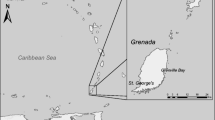Abstract
The objective of this paper is to outline a conceptual model of vulnerability to climate change as the first step in appraising and understanding the social and economic processes which facilitate and constrain adaptation. Vulnerability as defined here pertains to individuals and social groups. It is the state of individuals, of groups, of communities defined in terms of their ability to cope with and adapt to any external stress placed on their livelihoods and well-being. This proposed approach puts the social and economic well-being of society at the centre of the analysis, thereby reversing the central focus of approaches to climate impact assessment based on impacts on and the adaptability of natural resources or ecosystems and which only subsequently address consequences for human well-being. The vulnerability or security of any group is determined by the availability of resources and, crucially, by the entitlement of individuals and groups to call on these resources. This perspective extends the concept of entitlements developed within neo-classical and institutional economics. Within this conceptual framework, vulnerability can be seen as a socially-constructed phenomenon influenced by institutional and economic dynamics. The study develops proxy indicators of vulnerability related to the structure of economic relations and the entitlements which govern them, and shows how these can be applied to a District in coastal lowland Vietnam. This paper outlines the lessons of such an approach to social vulnerability for the assessment of climate change at the global scale. We argue that the socio-economic and biophysical processes that determine vulnerability are manifest at the local, national, regional and global level but that the state of vulnerability itself is associated with a specific population. Aggregation from one level to another is therefore not appropriate and global-scale analysis is meaningful only in so far as it deals with the vulnerability of the global community itself.
Similar content being viewed by others
References
Adger, W. N.: 1999a, ‘Exploring income inequality in rural, coastal Vietnam’. Journal of Development Studies 35, June.
Adger, W. N.: 1999b, ‘Social vulnerability to climate change and extremes in coastal Vietnam’. World Development 27(2).
Baulch, B.: 1996, ‘Neglected trade-offs in poverty measurement’ IDS Bulletin 27(1), 36–42.
Blaikie, P., Cannon, T., Davis, I. and Wisner, B.: 1994, At Risk: Natural Hazards, People's Vulnerability and Disasters, Routledge, London.
Bohle, H. G., Downing, T. E. and Watts, M. J.: 1994, ‘Climate change and social vulnerability: toward a sociology and geography of food insecurity’. Global Environmental Change 4, 37–48.
Bromley, D. W.: 1992, ‘Entitlements and public policy in environmental risks’, in Bromley, D. W. and Segerson, K. (eds.) The Social Response to Environmental Risk: Policy Formulation in an Age of Uncertainty, Kluwer, Boston pp. 1–21.
Burton, I., Kates, R. W. and White, G. F.: 1993, The Environment as Hazard, 2nd Edn., Guilford Press, New York.
Burton, I.: 1997, ‘Vulnerability and adaptive response in the context of climate and climate change’. Climatic Change 36, 185–196.
Cannon, T.: 1994, ‘Vulnerability analysis and the explanation of natural disasters’, in Varley, A. (ed.), Disasters Development and Environment, John Wiley, Chichester pp. 13–30.
Corbett, J.: 1988, ‘Famine and household coping strategies’. World Development 16, 1099–1112.
Cutter, S. L.: 1996, ‘Vulnerability to environmental hazards’. Progress in Human Geography 20, 529–539.
Foster, J., Greer, J. and Thorbecke, E.: 1984, ‘A class of decomposable poverty measures’. Econometrica 52, 761–766.
Hewitt, K.: 1997, Regions of Risk: A Geographical Introduction to Disasters, Longman, Harlow.
Jordan, A. and Greenaway, J.: 1998, ‘Shifting agendas, changing regulatory structure and the new politics of environmental pollution’. Public Administration 76, 669–694.
Moser, C.O.N.: 1998, ‘The asset vulnerability framework: reassessing urban poverty reduction strategies’. World Development 26, 1–19.
Palutikof, J. P., Subak, S. and Agnew, M. D. (eds.): 1997, Economic Impacts of the Hot Summer and Unusually Warm Year of 1995, University of East Anglia, Norwich.
Parson, E. A. and Clark, W. C.: 1995, ‘Sustainable development as social learning: theoretical perspectives and practical challenges’, in Gunderson, L., Holling, C. S. and Light, S. S. (eds.), Barriers and Bridges to the Renewal of Ecosystems and Institutions, Columbia University Press, New York pp. 428–460.
Platteau, J. P.: 1991, ‘Traditional systems of social security and hunger insurance: past achievements and modern challenges’, in Ahmad, E., Drèze, J., Hills, J. and Sen, A. (eds.) Social Security in Developing Countries, Clarendon, Oxford pp. 112–170.
Reardon, T. and Taylor, J. E.: 1996, ‘Agroclimatic shocks, income inequality and poverty: evidence from Burkina Faso’. World Development 24, 901–914.
Ruttan, V. W.: 1988, ‘Cultural endowments and economic development: what can we learn from anthropology?’ Economic Development and Cultural Change 36, (Supplement) 247–271.
Sabatier, P. A.: 1988, ‘An advocacy coalition framework of policy change and the role of policy oriented learning therein’. Policy Sciences 21, 129–168.
Sabatier, P. A. and Jenkins-Smith, H. C. (eds.): 1993, Policy Change and Learning: An Advocacy Coalition Approach, Westview, Boulder.
Sanderson, S.: 1994, ‘Political-economic institutions’, in Meyer, W. B. and Turner, B. L. (eds.), Changes in and Use and Land Cover: A Global Perspective, Cambridge University Press, Cambridge pp. 329–355.
Sen, A. K.: 1990, ‘Food economics and entitlements’. In Drèze, J. and Sen, A. K. (eds.), The Political Economy of Hunger, Vol. 1, Clarendon, Oxford pp. 34–50.
Smit, B., Burton, I. and Klein, R. J. T.: 1998, The Science of Adaptation: A Framework for Assessment. Paper presented at Intergovernmental Panel on Climate Change Workshop, ‘Adaptation to Climate Variability and Change’, San José, Costa Rica, 29 March-1 April 1998.
Smithers, J. and Smit, B.: 1997, ‘Human adaptation to climate variability and change’. Global Environmental Change 7, 129–146.
Watts, M. J. and Bohle, H. G.: 1993, ‘The space of vulnerability: the causal structure of hunger and famine’. Progress in Human Geography 17, 43–67.
Author information
Authors and Affiliations
Rights and permissions
About this article
Cite this article
Adger, W.N., Kelly, P.M. Social Vulnerability to Climate Change and the Architecture of Entitlements. Mitigation and Adaptation Strategies for Global Change 4, 253–266 (1999). https://doi.org/10.1023/A:1009601904210
Issue Date:
DOI: https://doi.org/10.1023/A:1009601904210




